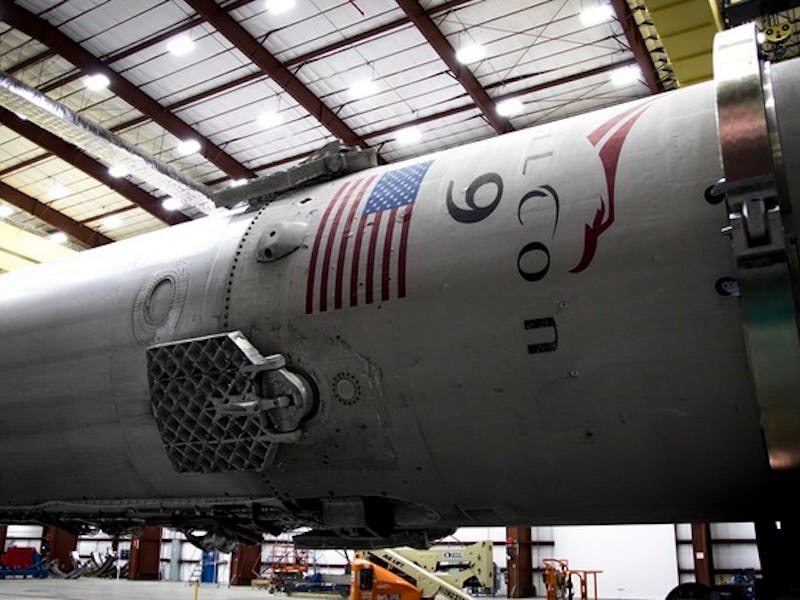SpaceX Prepares for Next Launch on the Anniversary of the Falcon 9 Rocket Crash-Landing
A year after the successful launch and failed landing of a Falcon 9 rocket, SpaceX is about to set out on its next mission.

At 4:47 a.m. EST, on January 10, 2015, the SpaceX Falcon 9 lifted off from Space Launch Complex 40 at Cape Canaveral Air Force Station on its CRS-5 mission. They gave it a 50 percent chance of landing safely at sea later that day.
But even though the rocket was able to deliver a Dragon spacecraft carrying 5,108 pounds of cargo to the International Space Station — its huge robotic arm capturing the goodies — the rocket itself made a crash landing on a barge 200 miles east of Jacksonville, Florida.
And although it was a disappointment, just the past month, SpaceX successfully landed a Falcon 9 rocket back on Earth and is planning yet another trip out of the atmosphere in only one week.
Though last year’s CRS-5 mission was historical, the landing was very unlikely for a few reasons. The Verge noted at the time, “The rocket was 70 feet wide and 14 stories tall, whereas the barge — a barge that Elon Musk likes to call an ‘autonomous spaceport drone ship’ — is a target just 300 feet across and 100 feet wide.” SpaceX wrote on its site a year prior, “stabilizing the Falcon 9 first stage for reentry is like trying to balance a rubber broomstick on your hand in the middle of a wind storm.” But if at first you don’t succeed, you know, launch another rocket.
And so they did. At approximately 8:39 p.m. EST, on December 21, 2015, the SpaceX ORBCOMM-2 mission made history, successfully reaching its target landing pad and completing the first stage of a rocket during an orbital launch. The Falcon 9 put 11 satellites into low-Earth orbit “in order to complete its 17-satellite array — satellites designed to offer integral network availability and reduce line-of-sight issues to achieve steady global signal coverage,” Inverse explained last month. And all the satellites worked without a hitch.
Reusable rockets are the goal of these endeavors. They would guarantee cheaper spaceflight, saving the company a ton of money over the years. They would also make traveling to the Red Planet a much simpler a task.
Just a week ago, to hype up space junkies, Musk uploaded to Instagram and Flickr photos of the first Falcon 9 to survive a landing. He wrote that it’s “ready to fire again” but made sure to mention that this particular bad boy was not going back into space since it’s now a historical artifact.
However, the company is already prepping the Falcon 9 v1.1 for a static fire on Sunday, January 17, 2016, from Vandenberg Air Force Base, California. According to NASA, the Jason-3 mission “will monitor Earth’s ocean’s surface topography and currents for the National Oceanic and Atmospheric Administration (NOAA) as part of the U.S. federal agency’s ongoing climate change research.” It will help both agencies not only in watching sea-levels rise, but gather information needed to predict hurricanes, severe weather, and watch wave heights that might affect ships and offshore operations.
The rocket has undergone “hot firings” at the McGregor, Texas, Test Facility to provide a “full dress rehearsal” for the big day so that any glitches can be ironed out. This is only the second time SpaceX will be using its West Coast launching facilities and the mission is set to be completed on a barge offshore from Florida — but safely this time. Either way, it’s full speed ahead for the company, and the progress it’s made in only a year is awe-inspiring, to say the least.